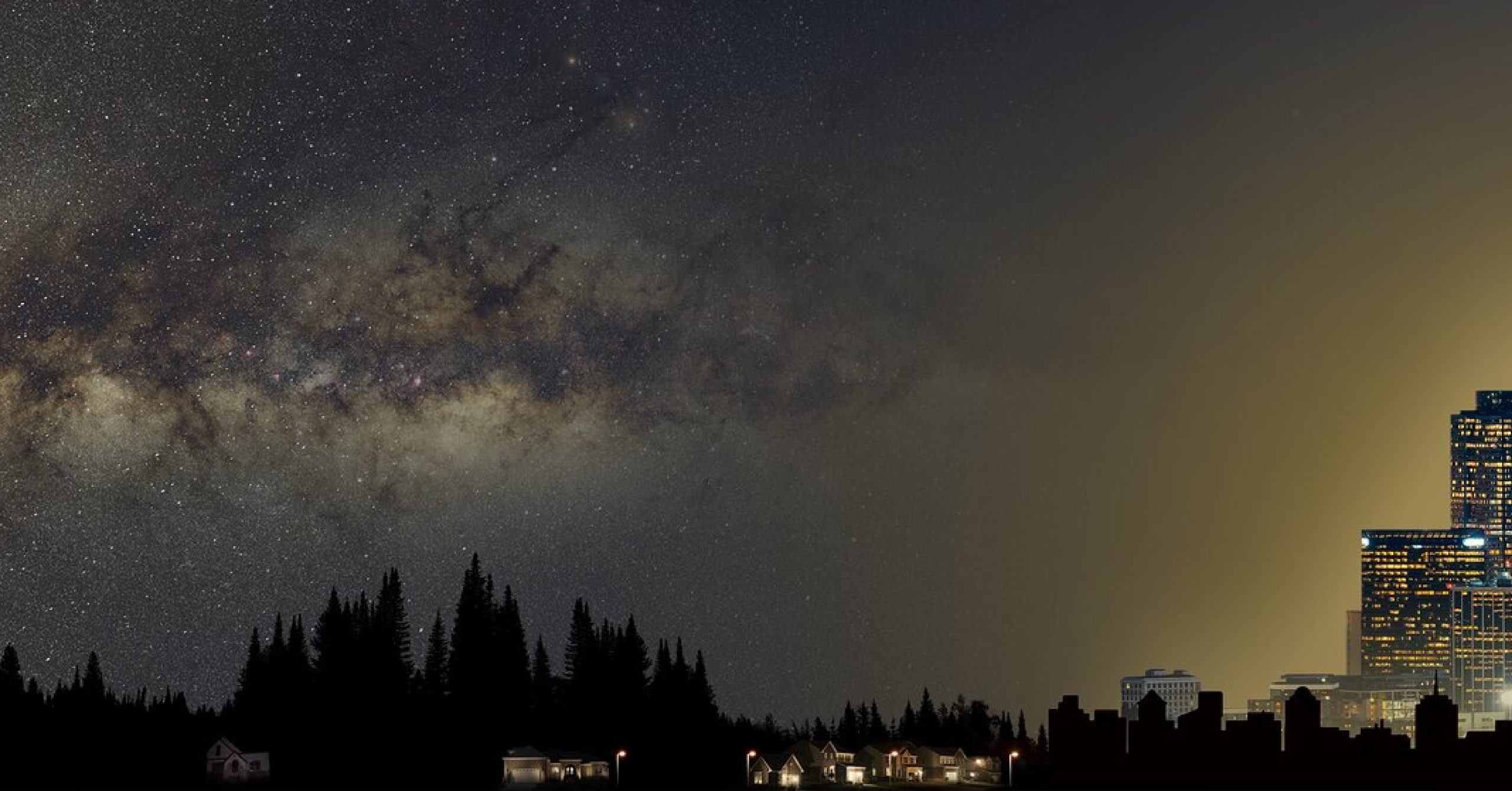We today announce LYRA-51‘s new initiative to monitor night-sky quality in Devon. The project will formally begin on 6 April 2026 with the installation of our first solar-powered Unihedron Sky Quality Meter, designed to record continuous measurements of night-sky brightness. These measurements, expressed in magnitudes per square arcsecond and mapped to the Bortle Scale, will create a permanent dataset that captures how Devon’s skies are changing over time.
Devon’s skies have long inspired awe, but like much of the world they are increasingly shaped by artificial light. This affects astronomy by reducing access to faint stars and nebulae, but the impacts are wider than astronomy alone. Light pollution is now recognised as an ecological stressor. Urban birds exposed to night lighting begin their day up to 50 minutes earlier than their rural counterparts, altering their natural rhythms (Dominoni et al., 2025). Artificial lighting reduces nocturnal pollinator visits by over 60%, causing declines in fruit set (Knop et al., 2017). Streetlights stiffen tree leaves, making them less suitable as food for insects and disrupting food webs (Douglas et al., 2024). In people, exposure to light at night is increasingly linked to disrupted circadian rhythms, sleep disorders and wider health outcomes (Falchi et al., 2016).
The first monitoring station will provide a foundation, but the project’s vision is broader. Over time, we will seek to identify collaborators and establish additional monitoring sites across Devon. A multi-site network will allow comparisons between rural and semi-urban skies, and provide benchmarks against internationally recognised dark-sky landscapes such as Exmoor, Europe’s first International Dark Sky Reserve, and Dartmoor, which retains valuable rural skies. The contrast between local measurements and these world-class dark skies will help to make light pollution visible and understandable, not just for scientists but for communities, councils, and policymakers.
The significance of this project lies not only in the data it will produce but also in the way those data can be used. Councils will have objective evidence to inform lighting policy. Ecologists will have a resource to link environmental changes to measured patterns in artificial light. Astronomers will gain records of long-term observing conditions. Communities will be able to engage with their skies, recognising what has already been lost and what might still be preserved. By making the invisible visible, this project aims to build the case that darkness, like clean air and water, is a shared public good.
We see this as an invitation. This is an open project that welcomes involvement from astronomers, schools, conservation groups, councils, and individuals who share an interest in the night environment. Opportunities to participate include hosting or supporting additional monitoring stations, using the data for education and outreach, and connecting findings to planning and biodiversity work.
LYRA-51 is Hydrogen Alpha’s flagship initiative, combining science, technology and community engagement to monitor, understand and protect the night sky. By building a long-term record of Devon’s skies, shared openly and expanded through collaboration, the project seeks to ensure that future generations inherit not only data but also the experience of looking up into a truly dark night.




